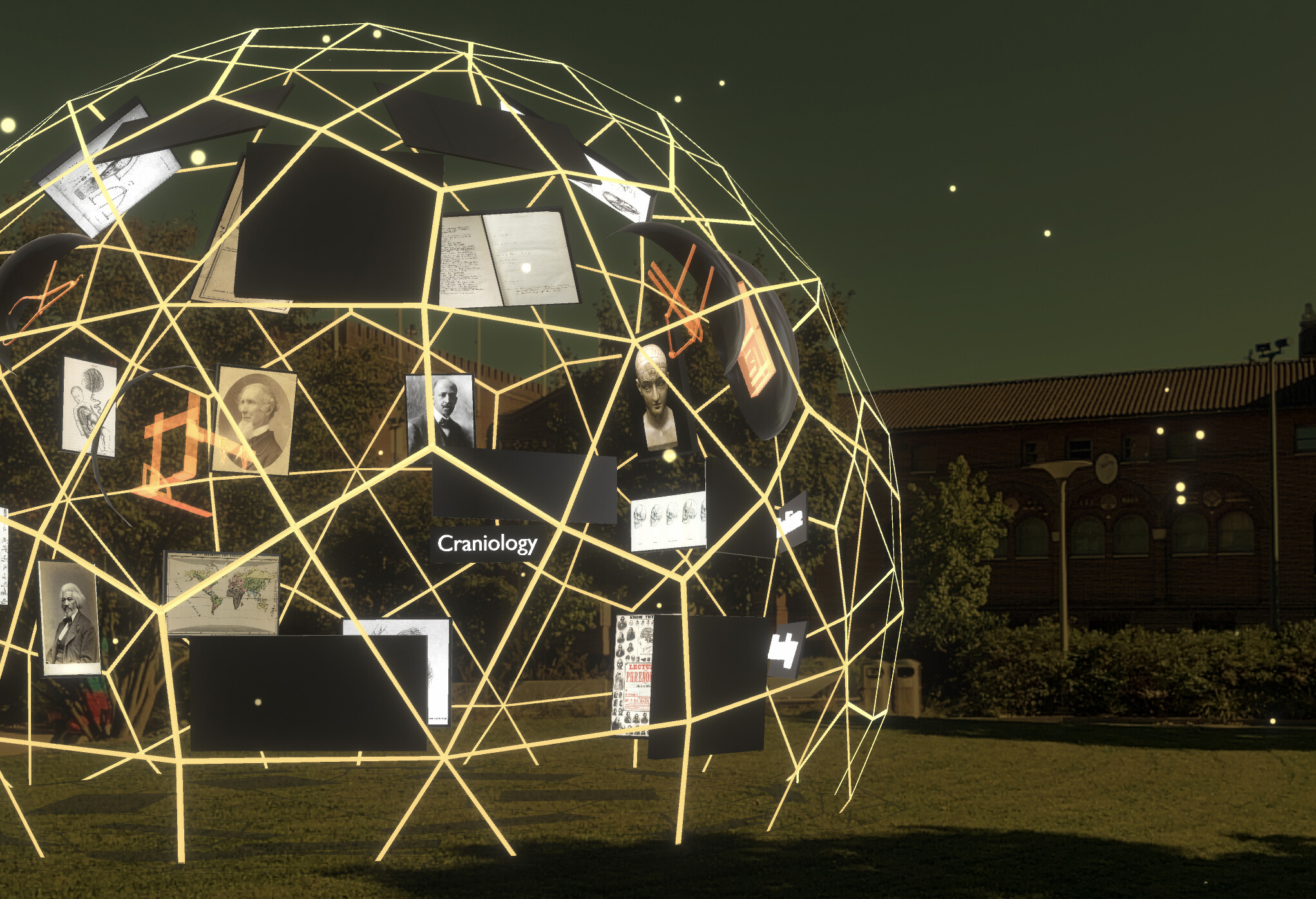
(From left) Doctoral student Hannah Yamagata, research assistant professor Kushol Gupta, and postdoctoral fellow Marshall Padilla holding 3D-printed models of nanoparticles.
(Image: Bella Ciervo)

The newly released Penn and Slavery Project app is meant to challenge and transform everyday experiences on Penn’s campus, revealing through augmented reality the devastating—but necessary to understand—truths behind the University’s early connections to slavery and scientific racism.
Created by a dedicated, interdisciplinary team of historians, librarians, developers, and designers, the app builds upon years of mostly undergraduate research, which has been compiled so far on the Penn and Slavery Project website. The app is meant to increase engagement with the content—particularly six unique stories—in an innovative way, and, hopefully, spearhead important and long-overdue conversations.
“Some people won’t like it, some people will love it, and I think any sort of reaction to it is great,” says Dallas Taylor, a senior medical anthropology major, and the app’s project manager. “I think just being able to start a conversation is more important than anything, for me.”
VanJessica Gladney, now a Ph.D. student in the Department of History, who has been involved with the Penn and Slavery Project since she was an undergraduate in 2017, agrees. She added that she hopes the conversations lead to actual action, too, naming specifically increased educational opportunities and reparative justice.
“There are people behind these stories, and there are names and families,” Gladney says. “This is an opportunity to take into consideration the people who are affected by this.”
Beginning at the Benjamin Franklin statue with the story of Caesar, an enslaved man who is believed to have worked on campus, the app takes users on a virtual tour across campus, which concludes at the Generations Bridge with a personal account from Penn doctoral student Breanna Moore, who contrasts the history of her family over five generations with the fortunes of her family’s enslavers, which she found included two Penn alumni.
“We made a 3D scan of Breanna’s family quilt and put it in front of the Generations Bridge, which now includes her family’s story, and then you can click the different squares and pieces of her documentary are highlighted,” explains Gladney. “It’s a digital interruption and multimedia experience that brings the material to life.”
On Friday, Feb. 19, at 3 p.m., Taylor, Gladney, and several other makers and researchers behind the app will join online for a launch event chock-full of panels and a roundtable, which is open to the public (register at Penn Libraries). The advising professor of the Penn and Slavery Project, Kathy Brown, will provide remarks, along with Penn Provost Wendell Pritchett.
Pritchett says that the students behind the Penn and Slavery Project have been “invaluable leaders in helping us learn more about Penn’s history.”
“This new app brings that history to a wider audience, advancing our shared understanding of this country’s troubled past,” Pritchett says. “At the same time, the app embodies our commitment to educational access and innovation, making historical research vivid and accessible to diverse new audiences around the world.”
The Office of the Provost, notes Gladney, was a strong supporter for the app’s development, along with a slew of other collaborators across Penn and the city that helped bring it to life, including Penn Libraries and the Kislak Center for Special Collections, Rare Books, and Manuscripts, University Archives & Records Center, and the Penn history department, as well as Monument Lab, Dream Syndicate, and several individual members of the Philadelphia community.
“I really saw that when you have the right project and get the right people involved, a lot of different parts of the institution and education and information and presentations can really come together and make a really cool thing,” says Gladney.
The hope is that attendees of the kickoff event try out the app ahead of time, explains Katie Rawson, director of Library Services and Operations at the Annenberg School for Communication, who has been working with the students on the app for a few years. Rawson insists, as well, that the app is not just for the Penn community, but “something that people across Philadelphia should be engaged with.”
“I think that opportunities like this and other AR digital humanities have a chance to give a lot more people access to information in ways that hasn’t really happened,” says Gladney, noting a dream of someday seeing the app used in classrooms—perhaps even inspiring young students’ interest in history for the first time.
Although looking forward to it, says Brown, the launch event Friday is “bittersweet.”
“We are celebrating student excellence and production,” she says, “but the work they have done has made visible a really grim past.”
Brown says she hopes the new app promotes a more robust conversation about what needs to change. As is noted on the Penn and Slavery Project website, Penn’s story is a national story—one of great importance as we come to terms with the country’s history of slavery.
“AR brings people together differently than a website or a documentary,” Brown explains. “Because if you can viscerally experience something different, maybe your ability to imagine change and carry it out might also be enhanced.”
Lauren Hertzler

(From left) Doctoral student Hannah Yamagata, research assistant professor Kushol Gupta, and postdoctoral fellow Marshall Padilla holding 3D-printed models of nanoparticles.
(Image: Bella Ciervo)

Jin Liu, Penn’s newest economics faculty member, specializes in international trade.
nocred

nocred

nocred